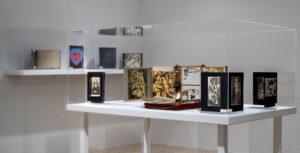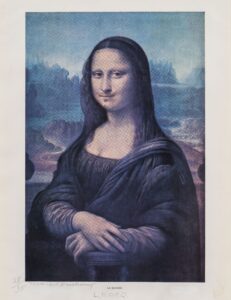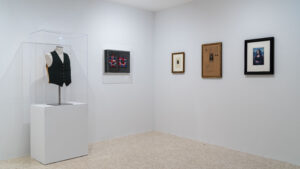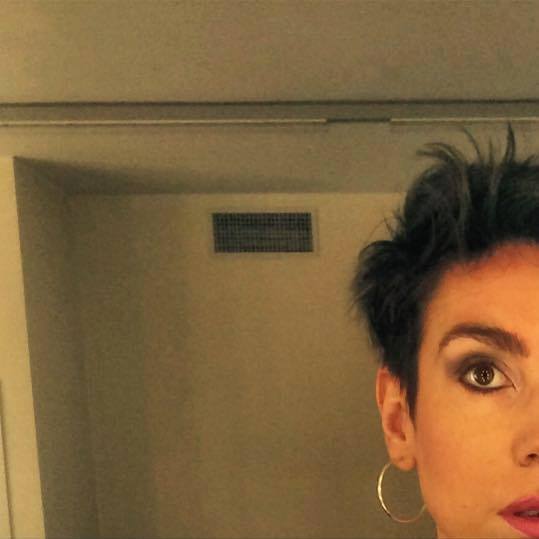For the first time the Guggenheim museum dedicates an exhibition to Marcel Duchamp, celebrating the creativity of an artist outside of any mold. The exhibition “Marcel Duchamp and the Lure of the Copy” is curated by Paul B. Franklin, an independent scholar among the greatest connoisseurs of the artist, and presents around sixty works created between 1911 and 1968. The iconic works, including paintings, photographs and ready-mades, investigate the relationship between original and copy in Duchamp’s work.

Marcel Duchamp and the Lure of the Copy, 14.10.2023 – 18.03.2024. Peggy Guggenheim Collection. Ph. Matteo De Fina © Association Marcel Duchamp, by SIAE 2023
Marcel Duchamp (Blainville-Crevon 1887- Neuilly-sur-Seine 1968) is among the most influential artists from the 20th and 21st centuries. Even today it is not possible to imagine an opening to the art world that was not facilitated by his brilliant vision. Forerunner of the concept linked to the dismantling of the art work as such, forerunner of an artistic thought that looks at the work as a repeatable and not unique object, Duchamp has undermined the aura of the art work and has shown it as it really is, a common object within everyone’s reach. The art work becomes something simple, banal, different but always authentic in its reproductions. After him the concept of an art work was completely turned upside down making everything possible, even for a urinal to become a masterpiece. The ready-made object, removed from its context and exhibited in the museum, is the most ingenious thing that can be done. The crucial fact is not so much the action itself, but the destruction and ridicule, if you like, of a thought linked to the art work as something untouchable and venerable.

Marcel Duchamp, L.H.OOQ., September 1964. Rectified readymade: color offset-lithographic print with soaphite and gouache additions, image: 27 × 18 cm, sheet: 33 × 25 cm, edition 28 of 35, Attilio Codognato Collection, Venice
Having convinced the public that a ready made is an art work is the most brilliant thing that has been given to future artists and to all of us. Not necessarily having to find an explanation for the artistic object is the basis of Marcel Duchamp’s vision. He is the most social and political artist who ever existed, who worked hard to suppress the original in favor of copying and reproduction as a symbol of complete abandonment to the idolatry of the work of art. If it is reproducible then it is not authentic; if many copies can be reproduced then it has no value. Duchamp’s refusal to respect these rules demonstrates that it does not exist difference between original and duplicate, there must not be a judgment and if we have learned anything from him it is precisely not having to judge. That of the copy is the seductive theme (just as the title suggests) of the exhibition presented at the Guggenheim where reproduction is exaggerated and many of the works in the room are shown in multiple copies with small variations, such as the emblematic Mona Lisa with the mustache: L.H.O.O.Q., French term that aims to provoke Leonardo’s masterpiece. Duchamp puts a mustache on the Mona Lisa and then takes it off. The copy of the copy that becomes original without actually being original.

Marcel Duchamp and the Lure of the Copy, 14.10.2023 – 18.03.2024. Peggy Guggenheim Collection. Ph. Matteo De Fina © Association Marcel Duchamp, by SIAE 2023
However, the pinnacle of his work can be found in Box in a Suitcase (Boîte-en-valise). This is a series of reproductions of works by Marcel Duchamp himself, conceived by the artist as a work in itself and presented in 1941. It is a leather suitcase containing miniature copies, color reproductions and photographs of Duchamp’s main works with additions in pencil, watercolor and ink, all arranged inside the case in a meticulous and functional way. The idea was to build a sort of album in which to collect the reproductions of all his works created up to that point. A sort of portable catalog that itself becomes an art work. A work does not operate where painting is replaced with an idea of painting. And it is precisely the idea of painting that is the great revolution in his thought. An art work should not be admired but should be a stimulus for our ideas. The art work of art is constantly evolving, just like his greatest masterpiece The bride laid bare by her bachelors (original title Mariée mise à nu par ses célibataires, même), better known as The Large Glass (Le Grand Verre), created between 1915 and 1923. Emblem of the ineffable, this work places us before new questions. It represents the new sensitivity of the aesthetics of art. There cannot be an absolute interpretation. This is Marcel Duchamp’s greatest teaching and this is how we should experience art, as an object subjected to chance and the free association of ideas.
Flavia Annechini
Info:
Marcel Duchamp and the Lure of the Copy
14/10/2023 – 18/03/2024
curated by Paul B. Franklin
Collezione Peggy Guggenheim
www.guggenheim-venice.it/it/

Born in 1987. Freelance publisher, passionate about contemporary art and the interaction between visual arts. She graduated from DAMS in Bologna in 2013 with a thesis on the relationship between Futurism and Fashion. She is always looking for emerging artists and discovering subcultures. She collaborated for several years with D’Ars Magazine (now archive) and currently collaborates with ViralWave as art manager and with Juliet Art Magazine.






NO COMMENT